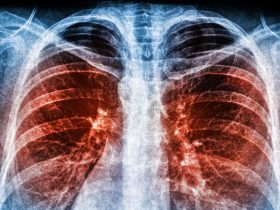Influenza A viruses (IAVs) are important respiratory pathogens of horses and humans. Infected individuals develop typical respiratory disorders associated with the death of airway epithelial cells (AECs) in infected areas. Virulence and risk of secondary bacterial infections vary among IAV strains. The IAV non-structural proteins, NS1, PB1-F2, and PA-X are important virulence factors controlling AEC death and host immune responses to viral and bacterial infection. Polymorphism in these proteins impacts their function. Evidence from human and mouse studies indicates that upon IAV infection, the manner of AEC death impacts disease severity. Indeed, while apoptosis is considered anti-inflammatory, necrosis is thought to cause pulmonary damage with the release of damage-associated molecular patterns (DAMPs), such as interleukin-33 (IL-33). IL-33 is a potent inflammatory mediator released by necrotic cells, playing a crucial role in anti-viral and anti-bacterial immunity. Here, we discuss studies in human and murine models which investigate how viral determinants and host immune responses control AEC death and subsequent lung IL-33 release, impacting IAV disease severity. Confirming such data in horses and improving our understanding of early immunologic responses initiated by AEC death during IAV infection will better inform the development of novel therapeutic or vaccine strategies designed to protect life-long lung health in horses and humans, following a One Health approach.
Equine influenza (EI) is one of the most important respiratory diseases of horses worldwide [1,2]. Outbreaks of EI disease occur recurrently despite the availability of vaccines and result in severe economic loss for the equine industry [1,3]. EI is caused by an influenza A virus (IAV), a member of the Orthomyxoviridae family, whose genome is composed of eight single-stranded RNA segments of negative polarity. Two subtypes of equine influenza virus (EIV) have been described in the horse, H7N7—thought to be extinct, and H3N8, which has been circulating in the horse population since 1963 [4,5,6,7].
Horses infected with EIV develop typical respiratory disorders, commonly seen in IAV-infected humans, including fever, nasal discharge, cough, and lethargy [1,2]. The histological changes caused by EIV are usually confined to the respiratory tissue and adjacent lymph nodes. In the respiratory tract, rhinitis and moderate to severe tracheitis and bronchitis are usually observed. They are accompanied by a loss of ciliated respiratory epithelium in infected areas, as well as a reduction in goblet cell numbers, diffuse epithelial vacuolar degeneration or necrosis, epithelial hyperplasia, or squamous metaplasia, and lymphocytic infiltration of the lamina propria from the nasal mucosa to the bronchi [8,9].
Like other IAVs, H3N8 EIV undergoes genetic evolution, and since its emergence in 1963, EIV has evolved in several lineages and sublineages, accumulating mutations in its genome [10,11,12,13]. Since the early 2000s, the dominant circulating sub-lineages around the world belong to the Florida clades 1 (FC1) and 2 (FC2). Until recently, FC2 EIVs have predominately been isolated in Europe and Asia, whilst the majority of FC1 EIVs have been isolated in North America [14]. However, in 2018 FC1 EIV strains were suddenly detected in Europe and spread widely, causing many outbreaks in Europe, USA, and Africa from late 2018 to 2019 [15,16,17]. Interestingly, evolutionary distinct EIVs display different levels of virulence, with some strains causing longer periods of pyrexia and duration of coughing [18,19], although the underlying reasons are still unclear. High viral loads can play a role in disease progression [20,21], but do not always correlate with disease severity [22,23,24,25,26], which is generally associated with excessive tissue inflammation and damage to the respiratory epithelium [27].
Data obtained in humans and mice indicate that the type of cell death that airway epithelial cells (AECs) undergo during an IAV infection impact disease severity [28,29,30]. As recently reviewed by Atkin-Smith and colleagues, during an IAV infection AECs may die by necrosis (unprogrammed or programmed necrosis—necrosis or necroptosis and pyroptosis, respectively), or apoptosis (programmed cell death via intrinsic or extrinsic pathways) [28]. Apoptosis is generally considered anti-inflammatory and is thought to prevent the release of damage-associated molecular patterns (DAMPs) while effectively eliminating virus replication [5,6,31]. Instead, necrosis is thought to cause pulmonary inflammation by allowing the release of DAMPs, such as interleukin-33 (IL-33) [30,32]








Leave a Reply